

L&NWR Wolverton Carriage Works - Bucks - Dec 2011
Wolverton railway works was established in Wolverton, Buckinghamshire, by the
London and Birmingham Railway Company in 1838 at the midpoint of the 112
mile-long route from London to Birmingham. The line was developed by Robert
Stephenson following the great success of the Liverpool and Manchester Railway
line.
As of 2010, the facility is much reduced: Railcare operates a full-scale train
maintenance, repairs and refurbishment works at the western end of the site, the
central area is derelict but slated for redevelopment as canal-side housing, the
eastern end is a Tesco store, apart from another canal-side housing development
at the extreme eastern end.
After trudging about in some seriously dark callers, we eventually entered the first of a series of workshops that contained some extremely impressive roofing. My first impressions reminded me immediately of the Euston Downside train shed but with a vaulted parallel chord roof rather than dual pitch, which gave a nicer light. This was taken about halfway up a dodgy staircase leading to the catwalk, picture taking at ground level being largely precluded by the dense vegetation.
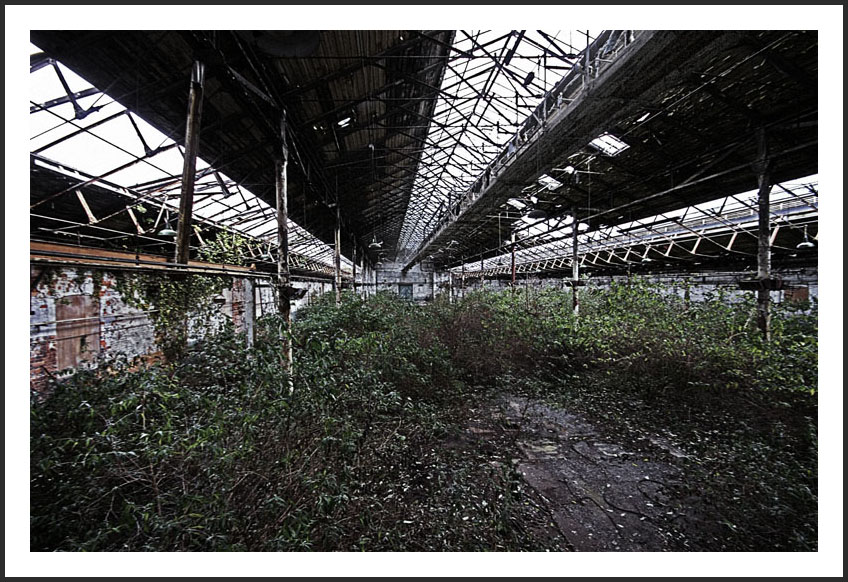
The site is one continuous building split into roughly four separate workshops, four large and one smaller one sandwiched in between. This is the view looking down the cat walk from the top of the stairs in the first workshop.
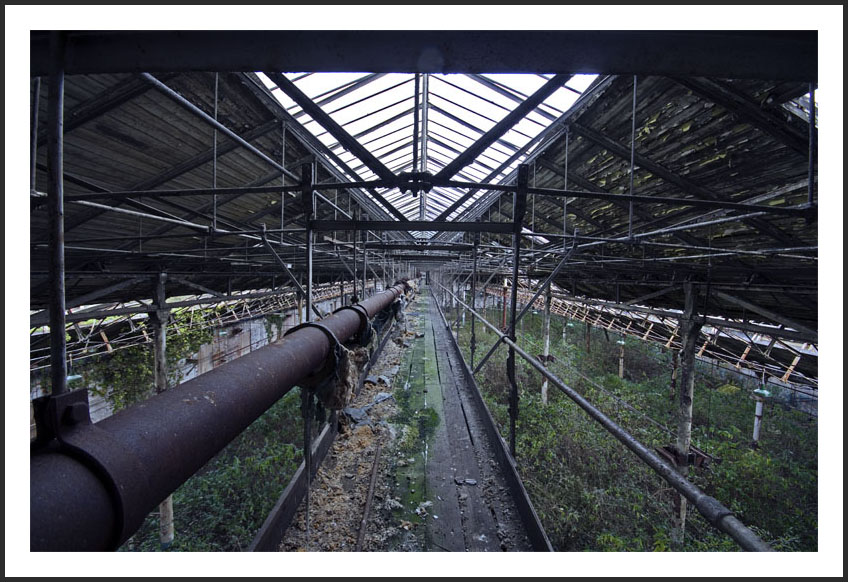
And a tilt shift view to the right.
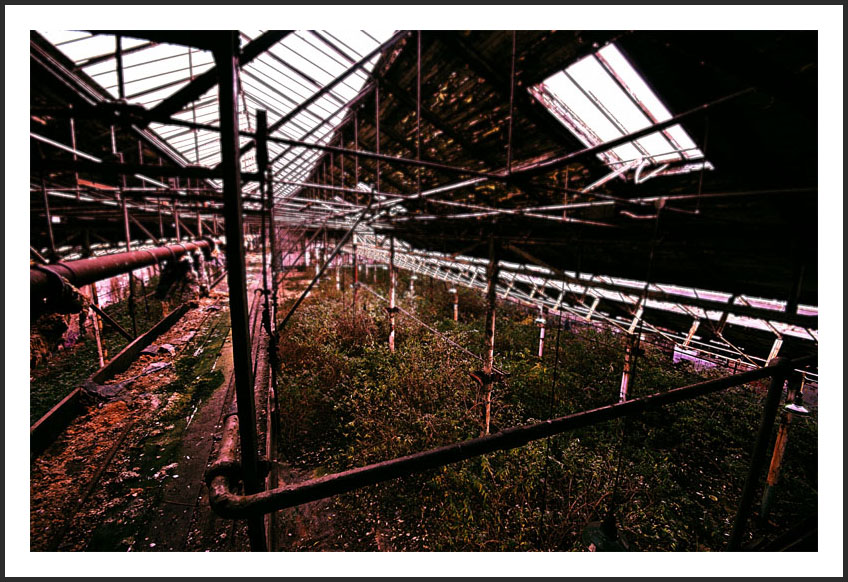
Turning around through 180 degrees and through a door it is possible to access the adjacent workshop. It's surprising given the size of the site and the amount of material left behind coupled with the photographic opportunities that this place isn't visited more often, but I think I know why; access is not forgiving resulting in a real bitch slap if you mess up.
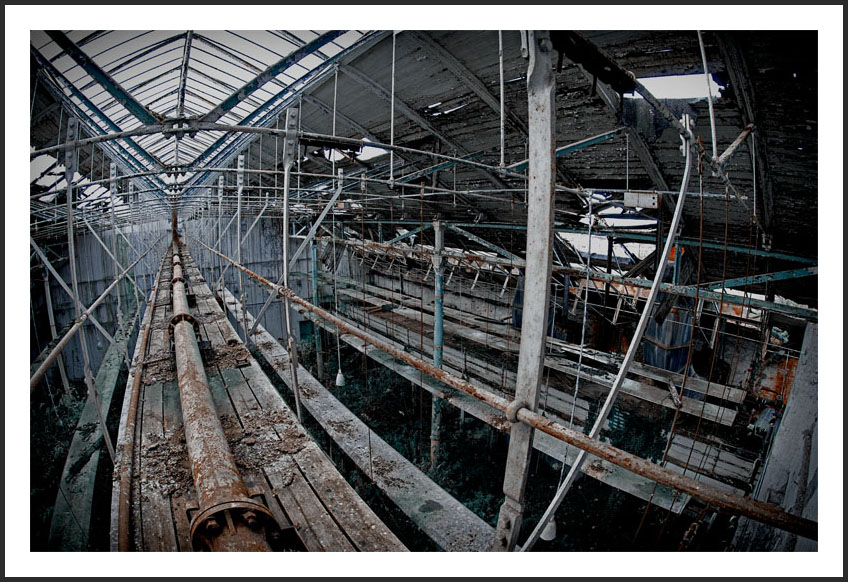
The catwalk here was in better shape than the one next door so I took a walk to the other end for a picture looking back the other way. I guess this area must have once been used to maintained steam engines as there are smoke deflectors hanging from the ceiling which would have helped prevent soot building up on the glass ceiling.

Though the first two workshops are impressive as spaces in themselves they are largely stripped so we didn't spend long in them and headed back to the large cellars we had been through earlier for a proper look. We walked the entire length of them which appears to be the full length of the first two workshops. On our way we came across a few interesting looking things, old benches, chunks strange of metal work, curious large round wooden doors, the usual assortment. In retrospect I wish I had taken more pictures than just this one of these ancient Victorian thunder boxes.

After reaching the end of the cellars, we turned around and headed back in the opposite direction eventually coming across the remains of the small workshop sandwiched between the larger ones. A lot of old signs are still left lying about, posed as if someone had deliberately set them up like that. Pretty much they speak for themselves, remnants from past open days. Must have been quite a day out!
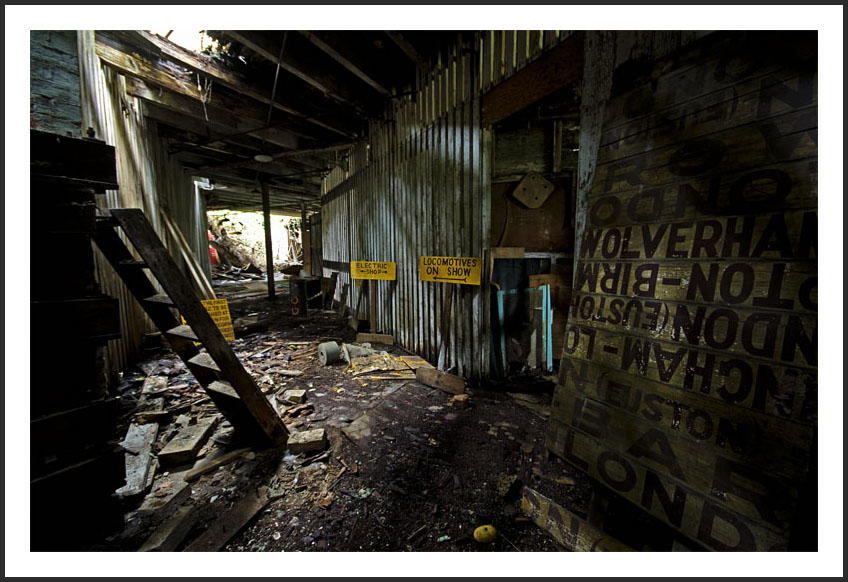
This odd looking "sign" appears to be made from the wooden boards that were once mounted on the sides of carriages to show the trains route. Rather than actually being a sign, I suspect it looks more like a case of "waste not, want not", so when they fell into disuse as carriage boards they were recycled for another use; here they appear to have been cut up and to made some kind of a ramp or platform.

Further in the workshop this station sign has been adapted for the ex "Electronics in Industry" display. In the background are assorted train carriage doors, from BR Mk I stock. Note how rotted this area is. The area above, where the small workshop was, is pretty much a complete mush, no doubt due to the fact that it to it once had a flat roof, always the first thing to go once a building falls into dis-use. I stuck my head up through the boards but there wasn't anything of great interest to be seen.

A fantastic find.
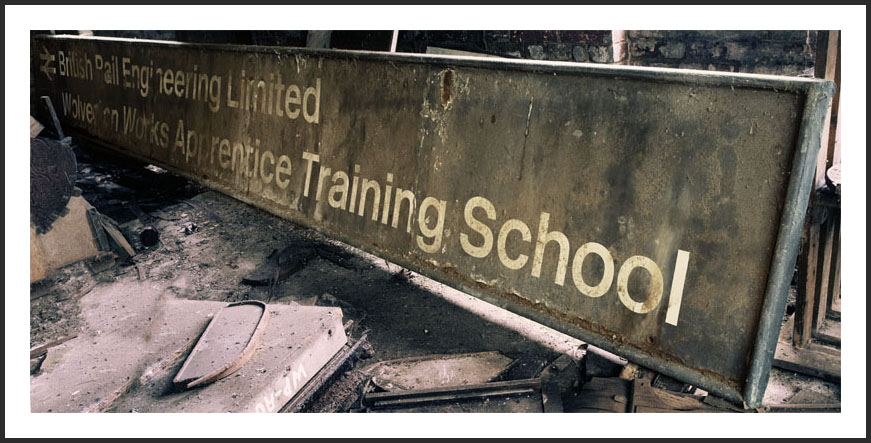
Further in we came across formers or "jigs" that would once has been used to make up the parts of a BR Mk 1 corridor carriage. The former in the bottom right of the picture, the corridor roof and on the workbench, the former for the roof of a compartment. I'm not sure what the other shapes were for. I'm guessing that the vinyl's that strewn across the floor would have been made into a laminate to be used in the formers.
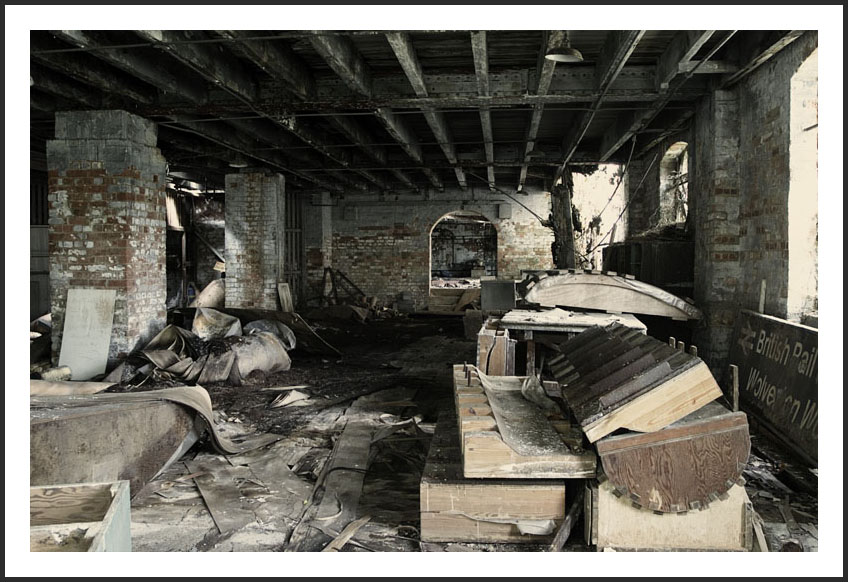
This rather handy picture from the NRM should make things clear. The corridor and compartment ceilings are (almost) the same shapes as the formers.
A close of up of the compartment roof former on the work bench. It looks like making the carriage bodies must have been quite a manually intensive job back in those days and I'm sure this kind of work has long since been automated.
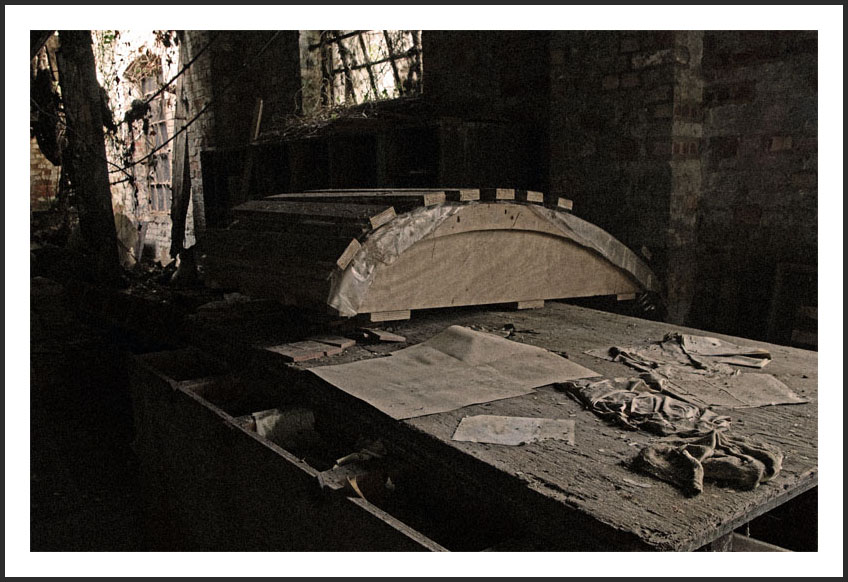
These small tables would once have been used in commuter coaches. Big enough to rest your coffee on but not much else, any bigger and they start taking up valuable commuter space. Bums on seats and all that.
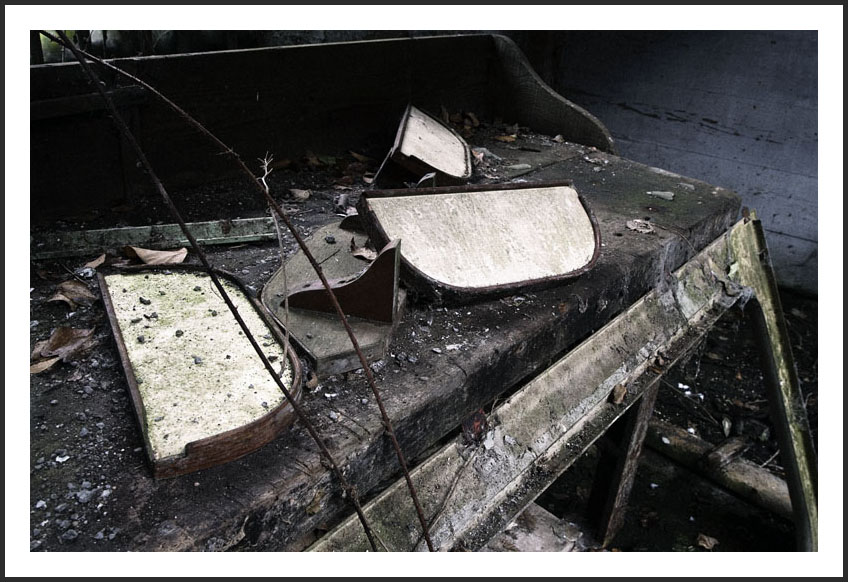
Where as these fellas would have been fitted to the Inter-City carriages, big enough to rest your pint on and read yer Gricers Weekly in comfort. The colours are very typical of the designs used for Mk 1 carriages during the 70's and late 80's, very of their time I guess.
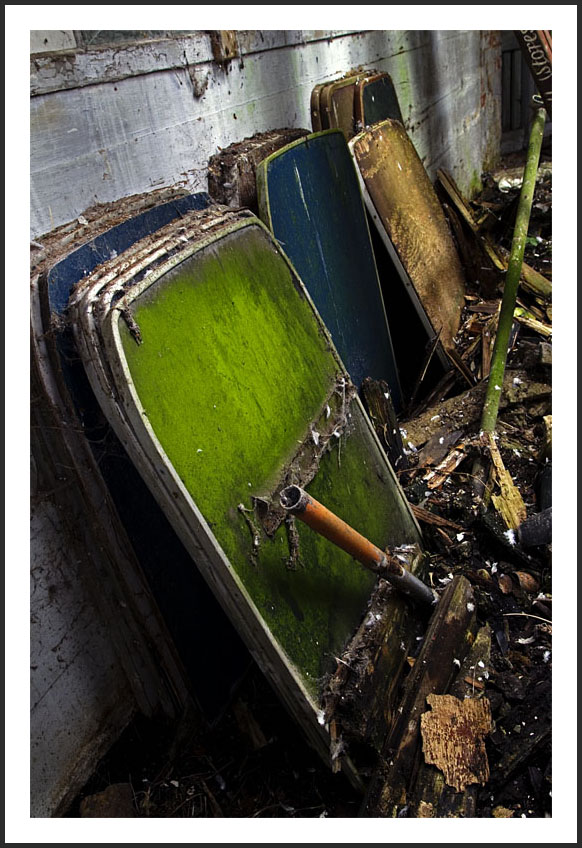
Who would be fool enough to open it any other way?
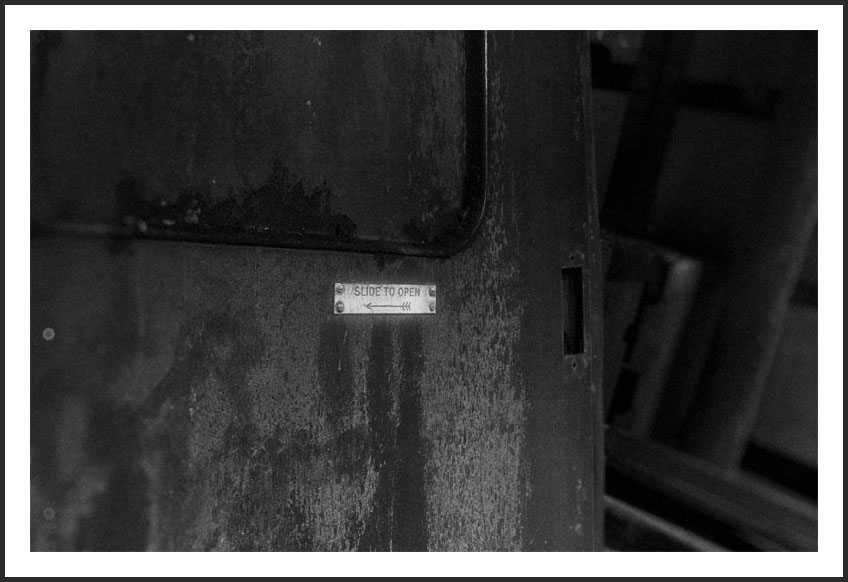
A door from a Mk 1 sleeper carriage.
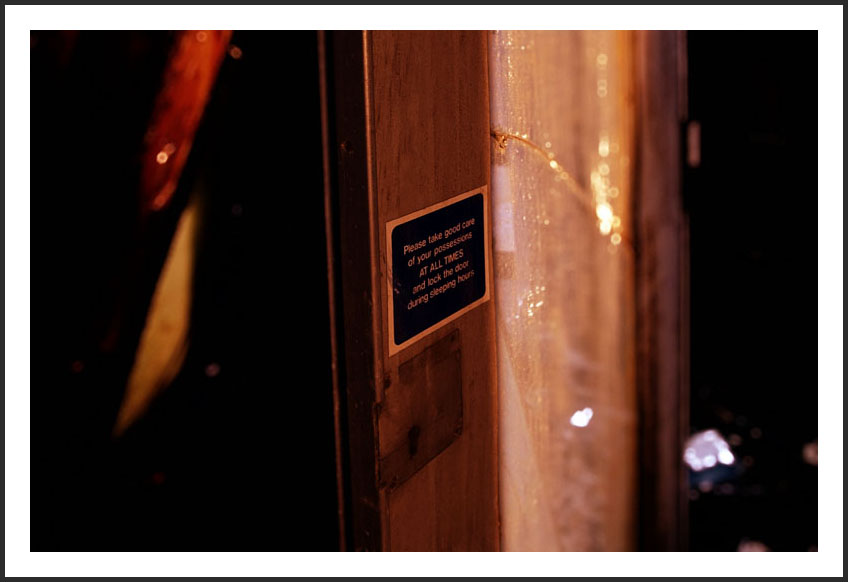
The toilet had long gone.

Loads of old industrial light shades still about. Note the toiler door in the background, complete with bum wad holder, though the "vacant/engaged" door lock has gone.
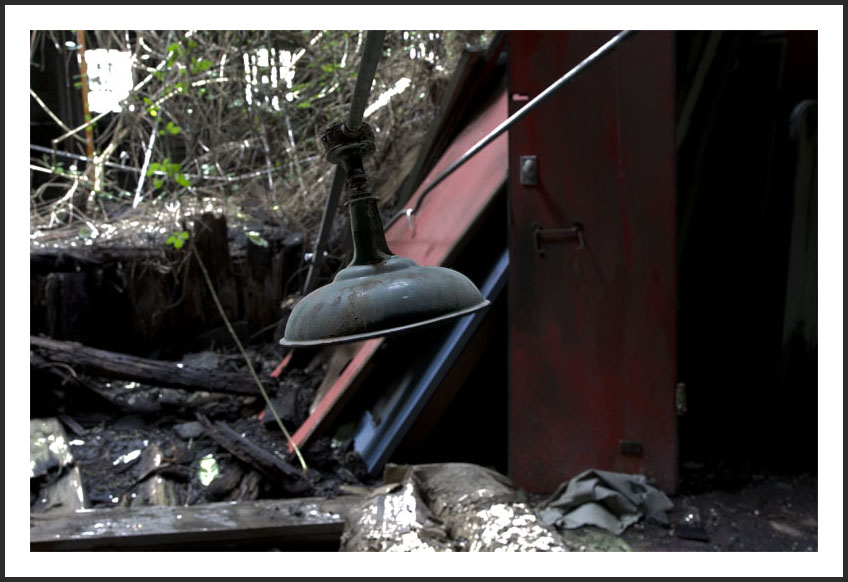
The remains of an electro-plating tank. In the back ground the sign shows the direction for various other departments on the works tour. Also worth noting are the almost complete remains of a section of carriage roof next to it.
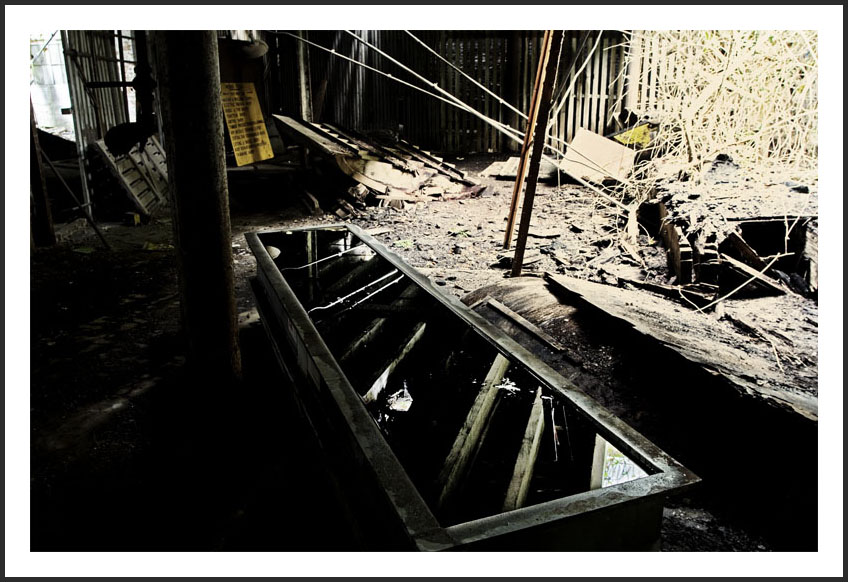
Finally we worked out how to get into the final two large workshops both of which still had a fair amount of ancient looking machinery in place, which I regrettably I did not photograph. Presumably these lovely little industrial lamp shades would once have illuminated them. Strangely, the one to the right was in almost perfect condition although I did not notice this till I looked closely at my picture.
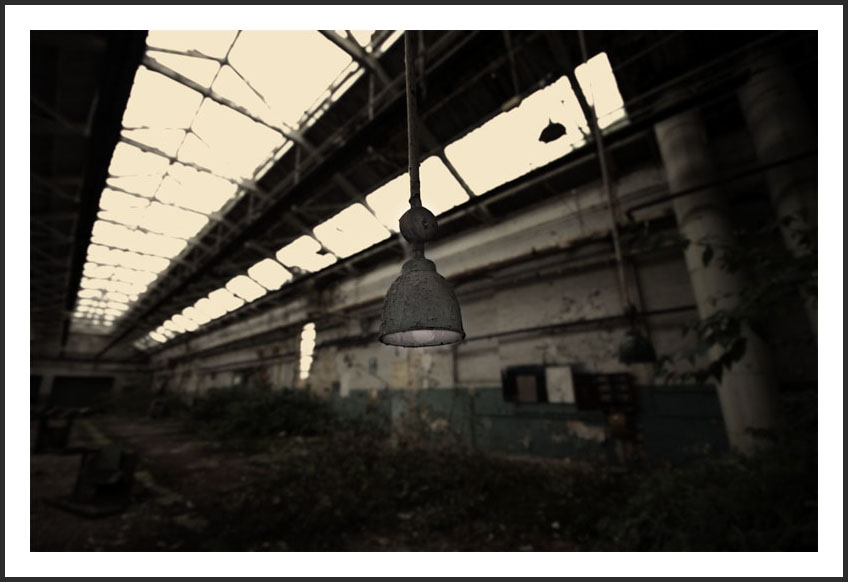
This is the view 180 degrees from above. The weird perspective is created by the "wedged" shaped workshop to the right, which tapers off towards the end. I tried to track the narrow gauge railway around the workshop but it disappeared under a load of junk and was lost.
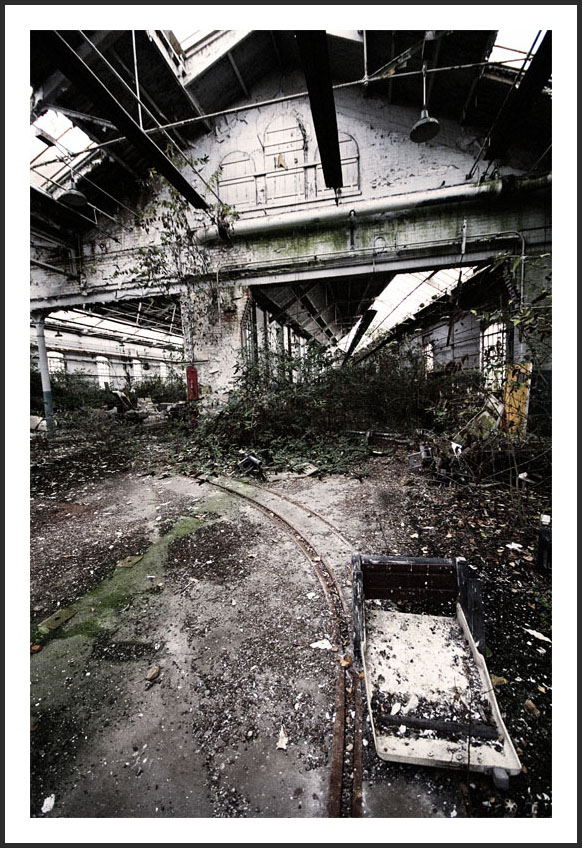
Plenty of old carriage seats.
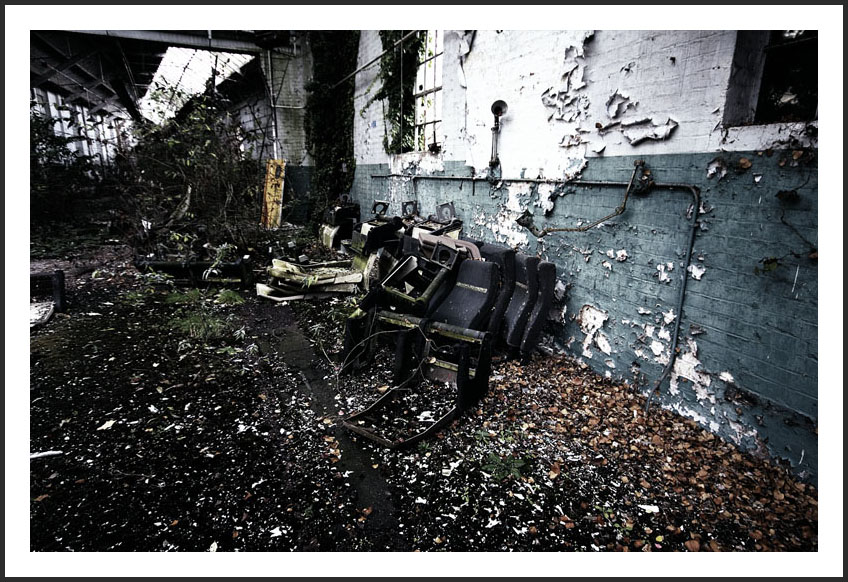
And a large saw.
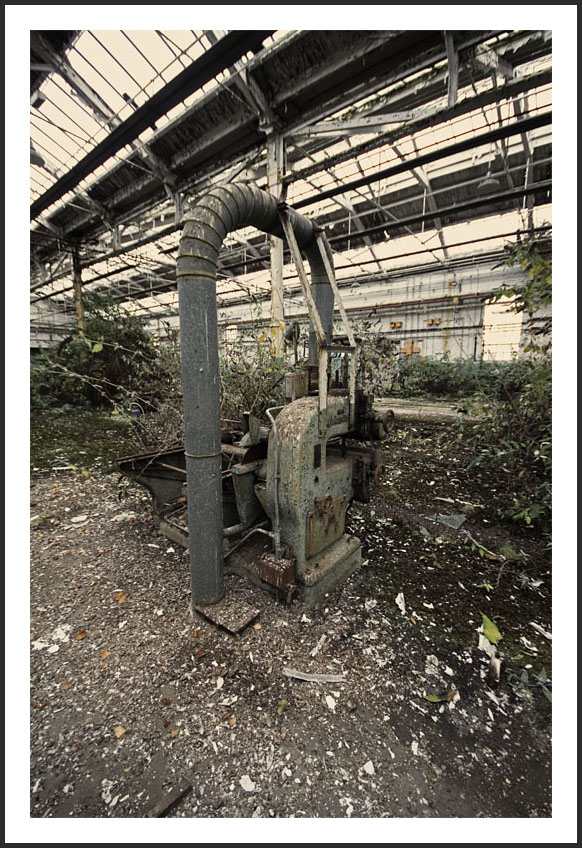
Finally we came to the last large workshop, with welding equipment still in situ. This I recall was the last picture I took and shortly after we called it a day and headed out.
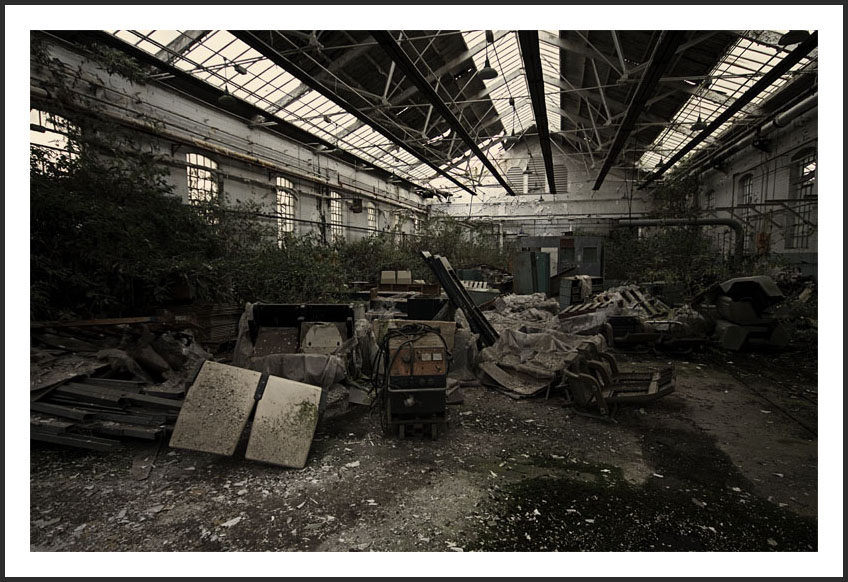
I thought this was going to be good and I wasn't disappointed and, looking back, I wish I had spent longer there and taken more pictures. I expect there is probably quite a lot more to find with a proper search, another time perhaps. Loads of industrial strength architecture as well as a fair amount of archaeological interesting manufacturing equipment left behind and for my money on the same scale as and as good as the Millennium Mills. Oh well, seems to me people are more interested in looking at old dog food making factories lol.